

By: Brian A. Hemstreet, PharmD, FCCP, BCPS

http://www.ucdenver.edu/academics/colleges/pharmacy/Departments/ClinicalPharmacy/DOCPFaculty/H-P/Pages/Brian-Hemstreet,-PharmD.aspx
Stroul B: Rehabilitation in community assist systems birth control uti order 15mcg mircette fast delivery, in Psychiatric Rehabilitation in Practice birth control goggles buy mircette mastercard. Solomon P birth control pills 1st month buy discount mircette, Draine J: the state of data of the effectiveness of shopper provided providers birth control that helps acne purchase mircette american express. Edmunson E, Bedell J, Archer R, Gordon R: Integrating talent constructing and peer assist in mental health therapy: the Early Intervention and Community Network Development Projects, in Community Mental Health and Behavioral Ecology. Reznik I, Sirota P: An open study of fluvoxamine augmentation of neuroleptics in schizophrenia with obsessive and compulsive symptoms. Swoboda E, Conca A, Konig P, Waanders R, Hansen M: Maintenance electroconvulsive therapy in affective and schizoaffective dysfunction. Rosenheck R, Evans D, Herz L, Cramer J, Xu W, Thomas J, Henderson W, Charney D: How long to wait for a response to clozapine: a comparability of time course of response to clozapine and standard antipsychotic treatment in refractory schizophrenia. Biol Psychiatry 2003; fifty four:453�464 [A] Treatment of Patients With Schizophrenia 129 Copyright 2010, American Psychiatric Association. Lieberman J, Chakos M, Wu H, Alvir J, Hoffman E, Robinson D, Bilder R: Longitudinal study of mind morphology in first episode schizophrenia. Leff J, Vaughn C: the function of maintenance therapy and relatives� expressed emotion in relapse of schizophrenia: a two-12 months comply with-up. American Academy of Child and Adolescent Psychiatry: Practice Parameter for the Assess ment and Treatment of Children and Adolescents With Schizophrenia. Hafner H, Loffler W, Maurer K, Hambrecht M, an der Heiden W: Depression, unfavorable symptoms, social stagnation and social decline in the early course of schizophrenia. Hafner H: Onset and early course as determinants of the additional course of schizophrenia. Schizophr Bull 1993; 19:seventy one�eighty four [C, D] Treatment of Patients With Schizophrenia 131 Copyright 2010, American Psychiatric Association. Hori A, Tsunashima K, Watanabe K, Takekawa Y, Ishihara I, Terada T, Uno M: Symptom classification of schizophrenia modifications with the period of sickness. Kane J, Honigfeld G, Singer J, Meltzer H: Clozapine for the therapy-resistant schizo phrenic: a double-blind comparability with chlorpromazine. Rosenheck R, Dunn L, Peszke M, Cramer J, Xu W, Thomas J, Charney D (Department of Veterans Affairs Cooperative Study Group on Clozapine in Refractory Schizophrenia): Impact of clozapine on unfavorable symptoms and on the deficit syndrome in refractory schizophrenia. Carman J, Peuskens J, Vangeneugden A: Risperidone in the therapy of unfavorable symptoms of schizophrenia: a meta-evaluation. Kopelowicz A, Zarate R, Tripodis K, Gonzalez V, Mintz J: Differential efficacy of olanzapine for deficit and nondeficit unfavorable symptoms in schizophrenia. J Stud Alcohol 2000; 61:744�750 [G] Treatment of Patients With Schizophrenia 133 Copyright 2010, American Psychiatric Association. Addington D, Addington J, Patten S: Depression in folks with first-episode schizophrenia. Collaborative Working Group on Clinical Trial Evaluations: Atypical antipsychotics for therapy of despair in schizophrenia and affective problems. Br J Psychiatry 1998; 173: 11�fifty three [F] Treatment of Patients With Schizophrenia 135 Copyright 2010, American Psychiatric Association. De Hert M, McKenzie K, Peuskens J: Risk components for suicide in young folks affected by schizophrenia: a protracted-term comply with-up study. Funahashi T, Ibuki Y, Domon Y, Nishimura T, Akehashi D, Sugiura H: A clinical study on suicide amongst schizophrenics. Hodgins S: Mental dysfunction, intellectual deficiency, and crime: proof from a delivery cohort. Hodgins S, Cote G: Major mental dysfunction and antisocial personality dysfunction: a criminal mixture. Rasanen P, Tiihonen J, Isohanni M, Rantakallio P, Lehtonen J, Moring J: Schizophrenia, alcohol abuse, and violent habits: a 26-12 months followup study of an unselected delivery cohort. Soyka M: Substance misuse, psychiatric dysfunction and violent and disturbed behaviour. Buchanan A: the investigation of appearing on delusions as a software for threat evaluation in the mentally disordered. Acad Emerg Med 2002; 9: 1402�1410 [G] Treatment of Patients With Schizophrenia 137 Copyright 2010, American Psychiatric Association. Volavka J: the consequences of clozapine on aggression and substance abuse in schizophrenic patients. National Resource Center on Homelessness and Mental Illness: Fact Sheet: Who Is Homeless D�Amore J, Hung O, Chiang W, Goldfrank L: the epidemiology of the homeless inhabitants and its impact on an urban emergency department. Hosp Community Psychiatry 1994; forty five:27�31 [G] Treatment of Patients With Schizophrenia 139 Copyright 2010, American Psychiatric Association. Delahanty J, Ram R, Postrado L, Balis T, Green-Paden L, Dixon L: Differences in charges of despair in schizophrenia by race. Dixon L, Green-Paden L, Delahanty J, Lucksted A, Postrado L, Hall J: Variables associated with disparities in therapy of patients with schizophrenia and comorbid temper and nervousness problems. Cole J, Pilisuk M: Differences in the provision of mental health providers by race. Valenstein M, Copeland L, Owen R, Blow F, Visnic S: Delays in adopting proof-primarily based dosages of conventional antipsychotics. Castle D, Sham P, Murray R: Differences in distribution of ages of onset in males and females with schizophrenia. American Academy of Pediatrics: Use of psychoactive treatment during pregnancy and attainable results on the fetus and newborn. Salzman C: Principles of psychopharmacology, in Verwoerdt�s Clinical Geropsychiatry, third ed. Dixon L, Weiden P, Delahanty J, Goldberg R, Postrado L, Lucksted A, Lehman A: Prevalence and correlates of diabetes in national schizophrenia samples. Vieweg V, Levenson J, Pandurangi A, Silverman J: Medical problems in the schizophrenic affected person. Warner R, Wolleson C: Alternative acute therapy settings, in Practicing Psychiatry in the Community: A Manual. Am J Psychiatry 1971; 127:1391�1394 [B] Treatment of Patients With Schizophrenia 143 Copyright 2010, American Psychiatric Association. Johnstone P, Zolese G: Length of hospitalisation for folks with extreme mental sickness. Huber G, Gross G, Schuttler R, Linz M: Longitudinal research of schizophrenic patients. Hall J, Baker R: Token economies and schizophrenia: a evaluate, in Contemporary Issues in Schizophrenia. Creed F, Black D, Anthony P: Day-hospital and community therapy for acute psychiatric sickness: a critical appraisal. Creed F, Black D, Anthony P, Osborn M, Thomas P, Tomenson B: Randomised controlled trial of day affected person versus inpatient psychiatric therapy. Creed F, Black D, Anthony P, Osborn M, Thomas P, Franks D, Polley R, Lancashire S, Saleem P, Tomenson B: Randomised controlled trial of day and in-affected person psychiatric therapy, 2: comparability of two hospitals. Dick P, Cameron L, Cohen D, Barlow M, Ince A: Day and full time psychiatric therapy: a controlled comparability. Br J Psychiatry 1985; 147:246�249 [B] Treatment of Patients With Schizophrenia one hundred forty five Copyright 2010, American Psychiatric Association. Marshall M, Crowther R, Almaraz-Serrano A, Creed F, Sledge W, Kluiter H, Roberts C, Hill E, Wiersma D: Day hospital versus admission for acute psychiatric problems. Creed F, Mbaya P, Lancashire S, Tomenson B, Williams B, Holme S: Cost effectiveness of day and inpatient psychiatric therapy: outcomes of a randomised controlled trial. McCrone P, Strathdee G: Needs not analysis: in the direction of a more rational method to community mental health resourcing in Britain. American Psychiatric Association: Psychiatric Services in Jails and Prisons, 2nd ed. Zinger I, Whichmann C: the Psychological Effects of 60 Days in Administrative Segrega tion. Soc Psychiatry Psychiatr Epidemiol 2003; 38: 297�304 [C] Treatment of Patients With Schizophrenia 147 Copyright 2010, American Psychiatric Association. Cohen M, Dembling B, Schorling J: the affiliation between schizophrenia and cancer: a inhabitants-primarily based mortality study. Hannerz H, Borga P, Borritz M: Life expectations for people with psychiatric diagnoses. Osby U, Correia N, Brandt L, Ekbom A, Sparen P: Mortality and causes of death in schizophrenia in Stockholm County, Sweden.
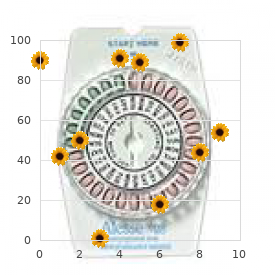
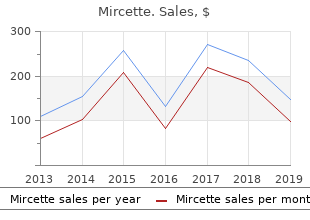
Rosengarten describes the evolution of this African craft from agricultural necessity to birth control pills emotional mircette 15mcg with amex artwork kind birth control pills 1960 purchase 15mcg mircette with mastercard. Although her work is mostly highly regarded birth control pills 50 buy mircette 15 mcg otc, a couple of fashionable basket makers take exception to birth control for women 6 inch buy generic mircette 15 mcg online Rosengarten�s use of the time period �sea grass� to describe what they name �sweetgrass baskets. We wanted a time period that would discuss with both bulrush [scrirpus robustus] "work" baskets, widespread in the course of the period of rice plantations, and sweetgrass [muhlenbergia filipes] "present" baskets, a Mt. Bulrush has once more come back into extensive use by the basket makers, so we felt calling the tradition �sweetgrass� was not inclusive sufficient. This seemingly minor distinction in vocabulary is an efficient example of how local perceptions of Gullah/Geechee practices could be at odds with scholarly descriptions utilizing the extra general and summary terminology characteristic of academic discourse. Although basketmaking was widespread on many of the Sea Islands, the artwork kind has persisted and proliferated around Mt. Pleasant, South Carolina, because of market demand and the creativity and th innovation of local artisans. Pleasant started sixty four Low Country Gullah Culture Special Resource Study Sw eetgrass basket m arker stands on the intersection of Ham lin Cecelia Anderson of M t. These baskets differed from the traditional �work baskets� in style, creative design, and use of palm [sabal palmetto] leaf quite than palm butt for stitching the rows collectively. Basket makers were fast to adapt their kinds to the market and continually invented new kinds and shapes (Hofbauer 1997a). Around 1916, Clarence Legerton, a white entrepreneur from Charleston, recognized the creative and commercial worth of sweetgrass �present� baskets and fashioned the Sea Grass Basket Company at 263 King Street, as a mail order supply. In 1930, a couple of months after the Grace Memorial Bridge, which crosses the Cooper River between Charleston and Mt. Pleasant, was opened to traffic, Lottie Swinton positioned a chair alongside Highway 17 and began to sell baskets to tourists. Other basket makers soon adopted suit and began displaying their wares in easy stands alongside the highway (Derby 1980). Betsy Johnson had a sweet shop on the highway, where she bought cakes, sodas, sweet, and sandwiches. Her husband Eddie Johnson hammered nails into the surface wall of the shop to display baskets for sale. Johnson soon bought baskets from others in the neighborhood to enhance the stock. Pleasant and McClellanville, South Carolina, has come to be known as the �Gullah Highway� (Rosengarten 1986). A historic marker commemorating the lengthy Gullah tradition of sewing sweetgrass baskets was erected in 1972 by the Christ Church Parish Historical Society and the Original Sweetgrass Marketplace Coalition. The marker is located on the site of the primary roadside basket stand on the intersection of Highway 17N and Hamlin Road (Hofbauer 1997b; Quick 1997). Following the success of roadside sales, basket makers soon started to display and sell their wares in downtown Charleston on the City Market. In the mid Nineteen Seventies, across the time of the United States National Park Service 65 Bicentennial, sweetgrass baskets and their makers grew to become recognized both nationally and internationally as Gullah/Geechee cultural icons. The Smithsonian Institution was crucial in this recognition of the creative and intrinsic worth of the hampers, and within a couple of years, sweetgrass baskets were featured in museums and galleries all over the world. Pleasant is now sewing �colorful baskets,� which feature natural dyes of several colours. According to Manigault, she received the idea and the process in a imaginative and prescient and has since obtained a trademark on the name and the method (Manigault, private communication 2000). Manigault has traveled throughout the United States to tell in regards to the rich history of sweetgrass basketry and to show her craft. Like most basket makers in the area, Manigault continues to develop her creative abilities in new and totally different basket types and kinds. Today�s basketry often bears little resemblance to the utilitarian baskets once used for agricultural functions. Napkin rings, earrings, hair ornaments, and even electrical lamps are frequently available at roadside stands. These gadgets are in themselves testomony to the ever altering dynamic nature of Gullah/Geechee culture, while remaining connected to the previous. Basketry also serves as a symbolic flash level for conflicts with financial developers over such issues as entry to raw supplies and commodification of the hampers and their makers. Sweetgrass once grew like a weed on barrier islands, in roadside ditches, and alongside the sides of farmer�s fields. However, as rural areas are developed, collecting longleaf pine [pinus palustris] needles, sweetgrass, and palm has turn out to be increasingly more troublesome and may soon put this cottage business in danger (Hicks 2004; Hitchcock 1995). Frequently, South Carolina basket makers are compelled to buy their raw supplies from sources in Florida; some are returning to the usage of bulrush to replace all or a part of the sweetgrass (Wexler 1993). The principal researcher in this study discovered firsthand that collecting basket supplies frequently involves snakes, bees, chiggers, mosquitoes, and different hazards together with occasional trespassing. As a result of the decline in local sweetgrass availability, a couple of publicly minded businesses and communities are planting sweetgrass as an ornamental plant in order that basketmakers will continue to have entry to the supplies of their craft. Some private developments now open their gates for sweetgrass assortment, and a few even encourage it. Land manager Karl Ohlandt of Dewees Island has been replenishing sweetgrass behind the dunes. Each 12 months Ohlandt invites basket makers to take the ferry to Vera M anigault, a M t. The Forest Service is doing its half to keep sweetgrass alive by growing take a look at plots in the Francis Marion National Forest (Hart, Halfacre, and Burke 2004). Both sweetgrass baskets and their makers at the moment are recognized as major vacationer sights, and baskets have turn out to be excessive finish collectibles. In in style representations of the South Carolina Low Country, coiled sweetgrass baskets have turn out to be virtually synonymous with Gullah/Geechee culture. In 1988, Dale Rosengarten, then affiliated with the McKissick Museum on the University of South Carolina, and Henrietta Snipes, a Mt. Pleasant basketmaker, based the Sweetgrass Cultural Preservation Society to be able to �help our young individuals to develop their skills and to preserve our heritage in the artwork of basket making. Pleasant basket maker who now serves as coordinator of the group, says members make displays, educate tourists about baskets and their history, and educate sweetgrass basketmaking in the colleges. Lee received the Jean Laney Harris Folk Heritage Award in 2000 in recognition of her continuation of traditional arts which have been passed down via generations of South Carolinians. Martha Gaillard, Lee�s mom, was born to sharecropper parents in a slave cabin on Boone Hall plantation. Sw eetgrass Baskets: A Blessing from God A Proud Tradition and a Valuable Investm ent Because of their ancestors� capacity to domesticate rice, Africans from the Windward or Rice Coast of West Africa were significantly wanted to turn out to be enslaved persons in theAtlantic Slave Trade. So they introduced pieces of their culture with them of their heads or secreted away on their bodies. The sweetgrass basket is an example of a significant retention of the African heritage transported across the Atlantic. The sweetgrass basket, initially designed as a tool of rice production and processing, had a very actual and important non secular connection for the displaced Africans. These gadgets, prevalent in Africa, proved to be a very welcome connection to the homeland. Incorporating these two components of their handicraft kept the Africans near their beloved homeland and frequently strengthened their relations with their religion in the God of their salvation. The first recognized sweetgrass basket in South Carolina is the fanner used for rice winnowing. They were used in the planting and harvesting of the coastal money crops � rice, cotton, and others. On many plantations, significantly Boone Hall, even after slavery, basket making continued. There were buyers who got here in, while some girls bought their baskets in the city market. After the Eighteen Nineties, sweetgrass baskets advanced from their agricultural purpose to different everyday makes use of. National Park Service sixty seven Around 1948, plastics of varied colours were introduced to replace the palmetto strips. The monetary worth of sweetgrass baskets surged with the opening of the Grace Memorial Bridge in 1929 and the paving of Highway 17 in 1931. One girl of imaginative and prescient, Lottie �Winee� Moultrie Swinton, started an extended standing tradition by inserting a chair alongside the highway to display baskets for sale. Each 12 months gathering supplies to be used in the baskets turns into tougher as the Lowcountry�s marshes are lost to developers.
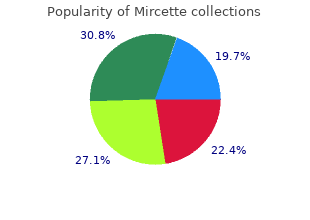
Consequently birth control pills starting with m order 15 mcg mircette free shipping, historians are dependent upon the work of historic archaeologists to birth control pills cause cancer mircette 15mcg with visa discover the misplaced legacy of enslaved Africans and strange white people who lived within the planter dominated society of coastal Georgia and South Carolina (Otto and Burns 1983) birth control failure buy discount mircette 15mcg. Fairbanks documented stories of both fishing and hunting by slaves to birth control pills infertility purchase genuine mircette online supplement their rations. He not solely discovered a lead slip sinker weight but also discovered lead shot, a gunflint, and a percussion cap in slave refuse (Ascher and Fairbanks1971; Fairbanks 1974; Ehrenhard and Bullard 1981). Probably no historian will ever know how much our portrayal of Southern society would have been altered if small planters and poor whites [and slaves] had left as many records as the big planters have. In a sense, all studies based mostly on literary sources are selective, the people they describe are selective, the generalizations apply 38 Low Country Gullah Culture Special Resource Study Last standing slave cabin, Oryzantia Plantation, Hobcaw Kitchen building at Refuge Plantation, Cam den Co. The American Revolution led to much more slave autonomy within the Low Country and Sea Islands. The basic disruption of warfare and the military obligations of white men increased the prevailing tendency towards owner absenteeism and served to improve the isolation between enslaved Africans and the white population. Immediately after the warfare there was a serious surge within the importation of recent African slaves to compensate for wartime losses and to secure slave laborers before the federal th authorities curtailed the follow. The late 18 century was, therefore, a time of owner absenteeism, slave isolation, the duty system, and an internal slave trade financial system. D uring this era, Gullah/Geechee language and culture took agency root and became the embodiment of the coastal region�s cultural distinctiveness (Kolchin 1994). This love of and religious connection to the land is yet another excuse why lack of household lands has dealt such a devastating blow to the social structure and cultural values of those communities (Armstrong 1980). Although the duty system could have made life slightly simpler for slaves on coastal plantations, by no means did it compensate for the yoke of slavery underneath which they have been pressured to reside and work. Like the gang slaves, these underneath the duty system sang work songs that often had secret meanings referring to freedom, escape, or flight to Africa. In some cases the songs referred to as for freedom via death (Hargis and Horan 1997; Parrish 1992). Although some privileges have been granted to laborers underneath the duty system, the actual fact stays that they have been nonetheless slaves and have been underneath the direct control of their masters. These human beings have been chattel, private property of their masters, and have been topic to arbitrary beatings and different harsh punishments. National Park Service 39 Enslaved Africans have been constantly underneath the specter of being taken to the public sale home and offered to satisfy the money owed of their grasp or his heirs, or, even worse, that their families can be break up up and offered. Slaves by no means accepted their situation, and engaged in work stoppages and work slow downs as a way of protest. They knew their very own value and knew that they produced the crops that made the planters rich. Often domestic slaves are imagined as having simpler lives than those who labored within the fields � once once more conjuring Hollywood photographs of smiling black mammies within the huge home, cooking and tending to the children. Clinton believes that �Mammy� was created by antebellum white southerners to depict a familial relationship between black women and white men in response to antislavery attacks from the North. After the warfare the �Mammy� image could have been embellished for the sake of nostalgia (1982). Cheryl Thurber echoes these sentiments in her �Development of the Mammy Image and Mythology� (1992). While their work could have been physically simpler than area work and their residing conditions and clothing slightly higher, the work assigned to domestic slaves was by no means ending. They have been generally on 24 hour name � some have been even required to sleep on a pallet close to their mistress�s bed. Domestic servants have been allowed little time for their very own meals and virtually no time with their very own families. When they have been permitted to eat, they ate the leftovers or scraps from the household meal. Field hands, nonetheless, had extra leisure time and freedom of motion with Sundays and later afternoons off to tend their very own fields (Harper 1985). Cooks and their helpers spent most of their time within the kitchen building, where the cooking fire was stored blazing all day and banked at night time. The kitchen was an inferno like sweatshop, notably in the course of the scorching summer time months. The prepare dinner�s work was dangerous, as she was continuously lifting heavy pots, typically inflicting her long skirts and sleeves to come very near the fire. Covered walkways led between the kitchen building and the eating room of the principle home. These walkways got here to be referred to as whistle walks, as slave women have been pressured to whistle while carrying meals so that they could not eat alongside the best way. Frequently, they have been required to eat while squatting before the kitchen fire as they cooked for the next meal. Enslaved women could have survived the Middle Passage solely to see themselves and their daughters confronted with one more terror. Some masters flaunted their slave relationships, while others stored their illicit liaisons secret. Some of those men offered their mulatto offspring to defend their wives, while others insisted that these youngsters become home slaves. Since it was almost impossible for wives concerned in these triangular conditions to get out of their marriages, they often took out their frustration in unfair, merciless habits towards their family slaves. Planters endeavored to promote and regulate slave marriages for a variety of reasons, the most typical of which was their hope that slave marriages would yield offspring and thereby improve their wealth. Slave women have been ordered to report pregnancies to the overseer, who supposedly granted them lighter workloads. The productive role of women working within the fields and their reproductive roles created an fascinating interplay between the annual cycles of crop production and the start of kids. Procreative activities have been subtly coordinated by the nature of the work the women performed. Cheryll Ann Cody studied the reproductive histories of 1,000 slave women on the Ravenel cotton plantations in South Carolina, and found that many enslaved women bore their youngsters in sturdy seasonal patterns that mirrored plantation work and planting schedules. Over one third of the slave youngsters have been born in the course of the months of August, September, and October, which signifies that a lot of these women became pregnant in the course of the months of November, December, and January, when labor requirements have been reduced due to completion of the harvest and harsh climate (Cody 1996). The seasonality of conceptions and births had a extreme impact on the survival rate of slave infants. Late summer time and early fall, times when many ladies have been of their last months of pregnancy, was additionally the time of probably the most demanding labor on cotton and rice plantations, and led to a excessive rate of toddler mortality. Women who had given start have been frequently allowed three weeks respite from area work and increased allotments of meals and clothing. However, the fact that they have been pressured to labor within the fields right up till the time of supply and return to the fields so soon after, signifies that the planters� major interest was in plantation production somewhat than replica points (Schwalm 1997). The Im pact of Gullah/Geechee Ancestors On the Coastal Landscape the labors of Gullah/Geechee ancestors left an indelible mark on the Low Country setting. The Low Country is a spot where natural, historic, and cultural resources are inexorably intertwined to kind this distinctive setting. Early settlers who got here to the Carolina Colony discovered tall virgin forests of longleaf pine. These forests have been the supply of the first export products, naval shops, timber, and deerskins. For the deerskin trade, European settlers depended upon indigenous peoples beyond the frontier to supply the trading homes of Charleston, Savannah, and elsewhere. As fields have been cleared National Park Service 41 Enslaved Africans shooting rice birds (bobolinks). The Enslaved African youngsters sitting close to slave quarters on a birds usually appeared on plantation tables. Charleston M useum M useum for agriculture, lumber from felled bushes could possibly be exported. Rice became king, but its standing was attained via the pressured labor of enslaved Africans. They cleared the cypress gum forests, where bushes have been so thick that it was impossible to see the sky. On this land they built an intensive dike system with rice trunks or sluice gates to control the periodic flooding of rice fields. The patchwork outlines of those former rice fields remain as silent tributes to the enslaved Africans who built them. The blood, sweat, and back breaking bodily labor of those Africans, direct ancestors of the Gullah/Geechee people, made a long-lasting mark on the tidal river ecosystems of the Low Country.
Buy mircette 15 mcg otc. Buttocks Dorsogluteal Intramuscular Injection Simulator.
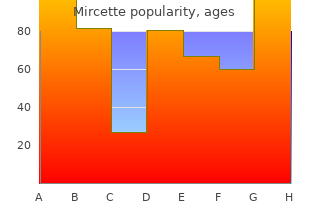
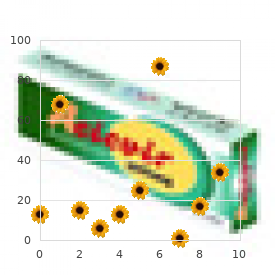
Raleigh Office:
5510 Six Forks Road
Suite 260
Raleigh, NC 27609
Phone
919.571.0883
Email
info@jrwassoc.com